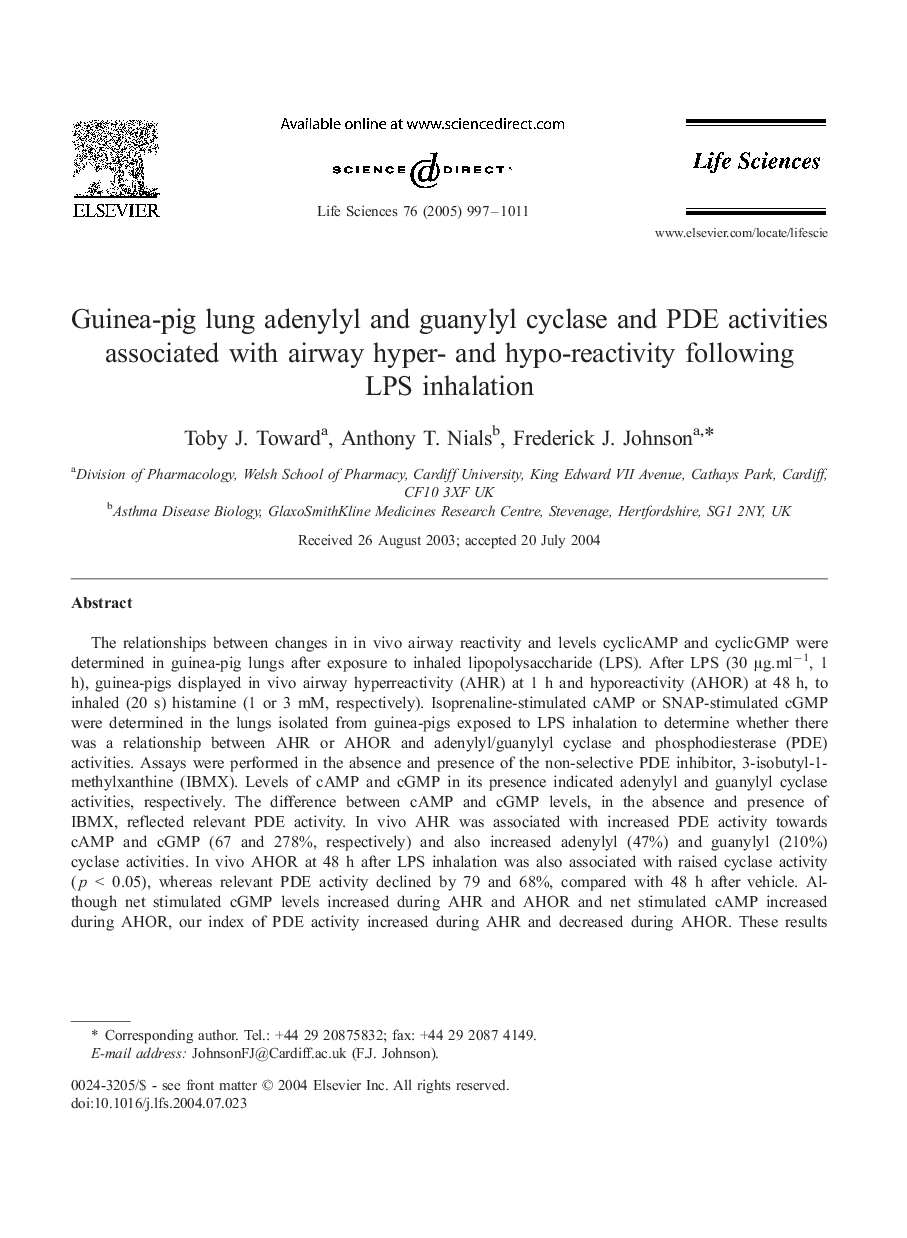| Article ID | Journal | Published Year | Pages | File Type |
|---|---|---|---|---|
| 9012984 | Life Sciences | 2005 | 15 Pages |
Abstract
The relationships between changes in in vivo airway reactivity and levels cyclicAMP and cyclicGMP were determined in guinea-pig lungs after exposure to inhaled lipopolysaccharide (LPS). After LPS (30 μg.mlâ1, 1 h), guinea-pigs displayed in vivo airway hyperreactivity (AHR) at 1 h and hyporeactivity (AHOR) at 48 h, to inhaled (20 s) histamine (1 or 3 mM, respectively). Isoprenaline-stimulated cAMP or SNAP-stimulated cGMP were determined in the lungs isolated from guinea-pigs exposed to LPS inhalation to determine whether there was a relationship between AHR or AHOR and adenylyl/guanylyl cyclase and phosphodiesterase (PDE) activities. Assays were performed in the absence and presence of the non-selective PDE inhibitor, 3-isobutyl-1-methylxanthine (IBMX). Levels of cAMP and cGMP in its presence indicated adenylyl and guanylyl cyclase activities, respectively. The difference between cAMP and cGMP levels, in the absence and presence of IBMX, reflected relevant PDE activity. In vivo AHR was associated with increased PDE activity towards cAMP and cGMP (67 and 278%, respectively) and also increased adenylyl (47%) and guanylyl (210%) cyclase activities. In vivo AHOR at 48 h after LPS inhalation was also associated with raised cyclase activity (p < 0.05), whereas relevant PDE activity declined by 79 and 68%, compared with 48 h after vehicle. Although net stimulated cGMP levels increased during AHR and AHOR and net stimulated cAMP increased during AHOR, our index of PDE activity increased during AHR and decreased during AHOR. These results therefore support the rationale for the use of PDE-inhibitors in the treatment of respiratory diseases associated with AHR.
Related Topics
Health Sciences
Medicine and Dentistry
Cardiology and Cardiovascular Medicine
Authors
Toby J. Toward, Anthony T. Nials, Frederich J. Johnson,
